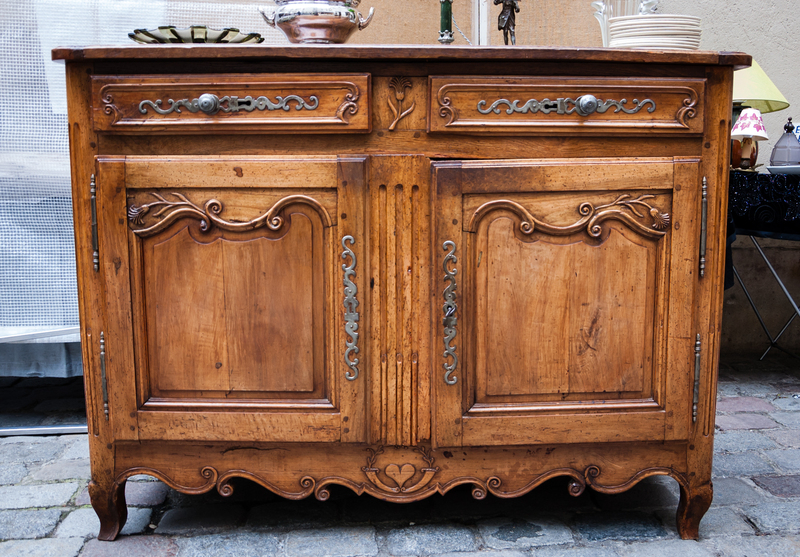Sustainable Options for Plant Pot Disposal
Are you a passionate plant enthusiast or a professional gardener wondering how to dispose of old plant pots responsibly? You're not alone! With the increased global focus on eco-friendly gardening practices, sustainable plant pot disposal is more important than ever. In this detailed guide, we explore a variety of sustainable options for plant pot disposal while considering environmental impact, practicality, and creative reuse.

Why Sustainable Plant Pot Disposal Matters
Traditional plant pots--especially plastic ones--have long been a mainstay in both commercial horticulture and home gardening. However, improper disposal contributes significantly to landfill waste and environmental pollution. By choosing eco-friendly methods for plant pot disposal, you contribute to reducing your ecological footprint and support a more sustainable gardening cycle.
The Environmental Impact of Discarded Plant Pots
- Plastic Waste: Most plastic pots are made from hard-to-recycle materials, lingering in landfills for hundreds of years.
- Resource Consumption: Non-biodegradable pots require energy-intensive production processes, depleting valuable natural resources.
- Soil and Water Pollution: Breakdown of plastics can leach harmful chemicals into the environment, affecting both soil and water.
Assessing Your Plant Pot Materials
Before settling on a disposal method, it's important to note what your pots are made of. Typical materials include:
- Plastic (polypropylene, polyethylene, etc.)
- Ceramic
- Terracotta
- Biodegradable or compostable pots (coconut coir, peat, paper pulp)
- Metal or composite materials
Understanding your plant pot materials is crucial for choosing the right sustainable disposal method.
Eco-Friendly Plant Pot Recycling Options
Plastic Plant Pot Recycling Programs
Plastic pots are the most common but present the hardest challenges for sustainable disposal. Many municipal recycling programs do not accept garden plastics due to contamination or material type. However, certain garden centers and nurseries offer plastic pot recycling programs. Here's how you can recycle plastic plant pots:
- Check with local garden centers like Home Depot, Lowe's, and independent nurseries--they often accept used plastic pots for recycling or reuse.
- Rinse pots thoroughly before returning them to reduce risk of pest or disease transmission.
- Look for community plant pot recycling events, typically held during spring or fall planting seasons.
- Contact your local waste management facility or Earth911 to find dedicated plant pot drop-off sites.
Making use of plant pot recycling programs is a practical and impactful choice for sustainable disposal.
Recycling Non-Plastic Pots
Ceramic and terracotta pots have unique challenges, as most curbside programs do not accept them due to durability and glaze contaminants. Yet you can still make sustainable choices:
- Donate intact pots to garden clubs, schools, community gardens, or local charities.
- Use broken pieces for garden drainage, mulch, or creative mosaic and art projects (more on this below).
- Some specialty recycling facilities accept unglazed terracotta as construction fill or for repurposing.
For metal pots, consider scrap metal recycling centers.
Creative Reuse and Upcycling of Plant Pots
Not all plant pots need to leave your garden--the most sustainable option for plant pot disposal is often to give them a new purpose. By reusing or upcycling, you keep materials out of the waste stream and spark your creativity!
Practical Garden Uses for Old Pots
- Seed Starting: Small pots are perfect for germinating new seeds or propagating cuttings.
- Pot-in-Pot Gardening: Bury old pots in the garden and swap out seasonal plants easily.
- Garden Organization: Use pots to sort and store gardening tools, labels, or plant stakes.
Upcycling Plant Pots for Home and Art
- DIY Planter Projects: Paint and decorate old pots for a modern, personalized garden look.
- Creative Storage: Use larger pots for storing birdseed, fertilizers, or as compost caddies.
- Kids' Crafts: Engage children in eco-friendly crafts, such as painting pots for gifts, or building mini fairy gardens.
- Mosaic and Pathway Tiles: Crush broken ceramic or terracotta pots to create unique stepping stones or decorate garden paths.
Tip: Share surplus pots with friends, neighbors, or via online marketplaces--one gardener's trash is another's treasure!
Sustainable Donation and Rehoming Opportunities
If your plant pots are still in good condition, consider donating them for further use. Organizations and individuals are often happy to accept secondhand gardening supplies. This is one of the simplest ways to ensure your old pots serve a new purpose, supporting a circular economy and greener community.
Where to Donate or Rehome Old Plant Pots
- Local schools for classroom gardening projects.
- Community gardens and urban farming initiatives.
- Nonprofit organizations, shelters, senior centers, and youth clubs.
- Online platforms like Freecycle, Craigslist, Facebook Marketplace, or neighborhood groups.
- Library or city-led garden programs.
Donating is not only a kind gesture but a crucial step toward sustainable plant pot disposal for the community.
Disposing of Biodegradable and Compostable Plant Pots
Eco-conscious gardeners are increasingly turning to biodegradable pots made from materials like coconut coir, peat, paper pulp, and even cow manure. These alternatives offer the ultimate eco-friendly plant pot disposal solution--returning safely back to nature.
Best Practices for Compostable Pots
- Check the package for compostability--verify it's free from plastic coatings or chemical treatments.
- Cut the pot into smaller pieces for faster breakdown if adding to home compost piles.
- Bury the pot directly into garden beds with the plant, facilitating root growth and gradual decomposition.
- For peat pots, use water sparingly, as they decompose faster when overly saturated.
Pro tip: Compostable plant pots are a top choice for those seeking sustainable plant pot disposal at the source!
How to Avoid Future Plant Pot Waste
Prevention is the ultimate solution in sustainability. The less we consume, the less we dispose of, so here are a few tips for cutting down plant pot waste from the very start:
Selecting Reusable or Returnable Pots
- Choose high-quality, durable pots that you can use year after year.
- Opt for brands that offer take-back or pot-refill programs.
- Buy from nurseries that supply plants in compostable or easily recyclable pots.
Embracing Zero-Waste Plant Purchasing
- Shop at local plant swaps, where you can exchange plants and pots directly with neighbors.
- Propagate your own plants at home and reuse existing pots.
- Request bare-root plants from suppliers, which ship without pots or plastic sleeves.
By integrating these habits, you significantly reduce the demand for new pots, ensuring sustainable plant pot disposal remains manageable.
The Future of Eco-Friendly Plant Pot Disposal
As sustainability becomes a central theme in gardening, industry innovation continues to offer new solutions. From plant pots made with recycled ocean plastics and fully biodegradable alternatives, to widespread retailer take-back schemes, the landscape is rapidly evolving for the better.
What can you expect in the future?
- Increased availability of compostable and plant-based pots.
- Smart design for multi-purpose pots--such as modular systems or compost-integrated lines.
- More comprehensive recycling infrastructure in cities and large retailers.
- Greater community awareness and peer-to-peer sharing networks for garden supplies.
Staying informed and involved in these advancements guarantees your garden remains green in every sense!

Summary: Your Guide to Sustainable Plant Pot Disposal
To recap, choosing sustainable options for disposing of plant pots is a vital part of being a responsible gardener. There's no one-size-fits-all solution, but the best practices include:
- Recycling through local programs or garden centers.
- Upcycling and creative reuse at home or in the garden.
- Donating to schools, charities, and community projects.
- Choosing biodegradable pots and composting when possible.
- Reducing overall pot consumption and favoring reusable alternatives.
Making these smart, eco-friendly choices will not only help protect our planet but also build a more conscious and connected gardening community. So, before you toss that old pot, pause and choose a greener future for your plants and the earth!
Frequently Asked Questions: Sustainable Plant Pot Disposal
Can all plastic plant pots be recycled?
No. Most municipal curbside programs do not accept black plastic or dirty pots. However, many garden centers have dedicated recycling streams--check locally.
How can I dispose of cracked or broken plant pots?
Reuse pieces for mulch, drainage, or art projects. Acceptable materials (like clean, unglazed terracotta) may go into specialty recycling or construction fill.
Are biodegradable pots always better for the environment?
Generally, yes--if they break down completely. Ensure the pot is truly compostable and free from synthetic liners or chemicals. Compost at home when possible.
What are the best ways to cut back on plant pot waste?
Reuse existing pots, swap with gardeners, choose compostable or returnable pots, and start more plants from cuttings or bare-root sources.
By using these sustainable plant pot disposal techniques, gardeners of all levels can make a positive environmental impact with every new planting season.